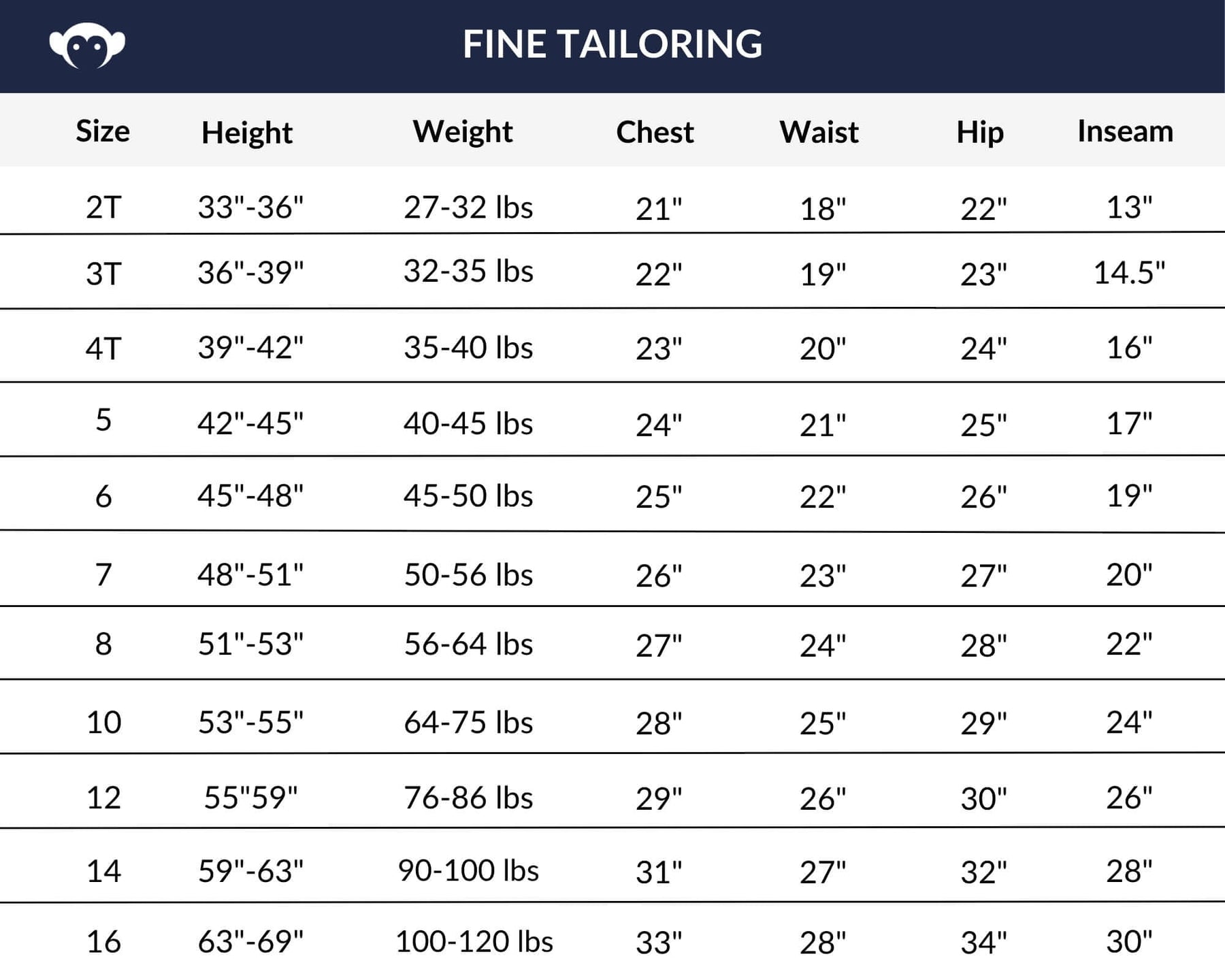Choosing the right size for your child’s clothes can be tricky. You want them to be comfortable, look great, and move freely.
But with so many brands and different measurements, it’s easy to get confused. That’s where a kidswear size chart becomes your best friend. In this guide, you’ll discover how to find the perfect fit every time, avoid returns, and keep your little one happy and stylish.
Keep reading to make shopping for your child’s wardrobe simple and stress-free.
Kidswear Size Basics
Choosing the right size for kidswear can be tricky. Kids grow fast and sizes vary across brands. Understanding kidswear size basics helps make better choices. It ensures clothes fit well and feel comfortable for children. This guide covers key points to know about kidswear sizing.
Age Vs Size
Clothes often come labeled by age, like 2 years or 5 years. Age gives a general idea of size. But each child grows differently. Some kids might be taller or shorter than others of the same age. Age is a rough guide, not an exact fit.
Height And Weight Considerations
Height and weight are more accurate for sizing than age. Measuring a child’s height helps find clothes that fit well. Weight also affects how clothes fit around the body. Using height and weight together gives a clearer picture of the right size.
Standard Size Categories
Kidswear usually follows standard size groups. These include newborn, infant, toddler, and youth sizes. Each category covers a range of ages and measurements. Knowing these categories helps pick the right section when shopping. Standard categories make sizing easier across different brands.

Credit: www.lashkaraa.com
Measuring Your Child
Measuring your child is the first step to finding the right size in kidswear. Clothes that fit well feel comfortable and look better. Taking proper measurements helps avoid buying clothes that are too tight or too loose. It saves time and money by choosing the perfect size from the start.
Essential Measurements
Focus on a few key areas. Chest, waist, and hips are the main points to measure. Also, check the height and inside leg length. These numbers guide you to the best size for shirts, pants, and dresses. Knowing these helps match your child’s body shape accurately.
How To Measure Accurately
Use a soft tape measure for best results. Ask your child to stand straight and relaxed. Measure snugly but not tight around the chest and waist. For height, measure from head to heels without shoes. Double-check each number to avoid mistakes. Write down the measurements clearly for reference.
Tools You Need
A flexible tape measure is the most important tool. A mirror helps to see the tape’s position. A notebook or phone is useful for recording numbers. Use a flat surface to measure height. Keep these tools ready before starting the process.
Size Charts By Age Group
Size charts help find the right clothes for kids. Sizes change with age and growth. Using age groups makes shopping easier. It helps parents pick the best fit fast. Below are common size groups for kidswear.
Newborn Sizes
Newborn sizes fit babies from birth to 3 months. These clothes are soft and gentle on skin. Sizes usually include weight and length guides. They keep babies comfy and cozy. Perfect for tiny, delicate bodies.
Toddler Sizes
Toddler sizes suit children aged 1 to 3 years. Toddlers grow quickly, so size charts help track growth. Clothes allow easy movement and play. Sizes often show height and weight ranges. They help find clothes that fit well.
Kids Sizes
Kids sizes cover ages 4 to 7 years. At this stage, kids need more variety in styles. Size charts include chest, waist, and height measurements. These sizes balance comfort and style. Clothes fit active children perfectly.
Pre-teen Sizes
Pre-teen sizes fit children aged 8 to 12 years. Growth varies a lot in this group. Size charts guide parents to choose the right fit. They include detailed measurements like waist and inseam. Clothes suit growing bodies and changing styles.
International Size Differences
Kidswear size charts vary a lot across countries. Different regions use different size standards. This can confuse parents buying clothes online or while traveling. Understanding these differences helps pick the right size easily. It saves time and avoids returns.
Us Vs Uk Vs Eu Sizes
The United States, United Kingdom, and European Union use distinct sizing systems. US sizes often label kidswear by age or height in inches. UK sizes resemble US but sometimes run smaller. EU sizes use numbers based on the child’s height in centimeters. For example, a US size 6 might be UK 5 or EU 116. Knowing these differences prevents mistakes in ordering.
Converting Sizes Easily
Simple size charts or converters help switch between US, UK, and EU sizes. Measure your child’s height and weight first. Match these numbers on a reliable size chart. Many online stores provide conversion tables. Keep a chart handy for quick checks. This method cuts confusion and ensures a better fit for your child’s clothes.
Tips For Buying Clothes Online
Buying kidswear online can save time and offer many choices. Yet, it needs care to find the right size. Clothes that fit well keep children comfortable and happy. Here are some tips to help you buy kidswear online with confidence.
Checking Size Charts Carefully
Size charts are not all the same. Each brand may measure differently. Always check the chart before ordering. Measure your child’s height, chest, and waist. Compare these numbers with the chart. This step reduces the chance of buying wrong sizes.
Reading Customer Reviews
Customer reviews give real feedback on clothes. Look for comments about fit and quality. Reviews can tell if clothes run small or large. They also share if the fabric feels soft or rough. Use this information to choose the best clothes.
Allowing Room For Growth
Children grow fast. Buy clothes with a little extra space. This allows kids to wear them longer. Choose sizes that fit now but leave room to grow. It saves money and avoids frequent shopping trips.

Credit: www.appaman.com
Common Fit Issues And Fixes
Choosing the right size for kidswear can be tricky. Clothes that do not fit well cause discomfort and limit movement. Parents often face common fit issues but simple fixes can help. Understanding these problems makes shopping easier and more effective.
Too Tight Or Too Loose
Clothes that are too tight can hurt and restrict play. Look for stretchy fabrics or sizes with extra room. If clothes are too loose, kids may trip or feel uneasy. Try adjustable waistbands or layering with fitted shirts underneath.
Length Problems
Short pants or sleeves can bother active kids. Choose clothes with cuffed hems that can be rolled up or down. Long clothes can be folded or hemmed temporarily. Always check length before buying to avoid discomfort.
Adjusting For Different Body Types
Kids have different shapes and sizes. Some have long legs, others broader shoulders. Select brands that offer various fits like slim, regular, or relaxed. Mix and match sizes for tops and bottoms to fit each child perfectly.
Special Considerations
Choosing the right size for kidswear can be tricky. Special factors affect how clothes fit children. These factors include seasons, shoe sizes, and unique needs. Understanding these helps pick the best clothing for kids.
Seasonal Clothing Sizes
Clothes for winter and summer differ in size. Winter clothes often have extra layers. This makes them bulkier and larger. Summer clothes are lighter and fit closer to the body. Always check size charts based on the season. This ensures comfort and proper fit.
Footwear Sizing
Children’s feet grow fast and change shape. Shoe sizes vary by brand and style. Measure feet regularly to find the right size. Leave a little room for growing toes. Shoes that are too tight or loose cause discomfort. Proper fit supports healthy foot development.
Clothing For Kids With Unique Needs
Some children need clothes with special features. These can include extra soft fabrics or easy closures. Adaptive clothing helps kids dress independently. Sizes might differ to allow space for medical devices. Choose brands that offer comfort and accessibility. This helps meet each child’s specific needs.

Credit: www.appaman.com
Frequently Asked Questions
What Age Group Does The Kidswear Size Chart Cover?
The kidswear size chart typically covers ages from newborn to 14 years. It helps find the right fit for toddlers, kids, and early teens.
How Do I Measure My Child For Kidswear Sizes?
Measure your child’s chest, waist, hips, and height. Compare these measurements to the size chart for accurate fitting.
Why Is Using A Kidswear Size Chart Important?
A size chart ensures clothes fit comfortably and look good. It reduces returns and helps choose the right size every time.
Can Kidswear Sizes Vary Between Brands?
Yes, sizes may differ across brands. Always check each brand’s specific size chart before purchasing kidswear online or in-store.
Conclusion
Choosing the right size for kidswear becomes simple with a clear size chart. It helps parents avoid guesswork and saves time. Clothes that fit well feel comfortable and look good. Always check measurements before buying to ensure the best fit.
Remember, kids grow fast, so update sizes often. A good size chart guides you to make smart choices. This way, your child stays happy and comfortable in every outfit.

